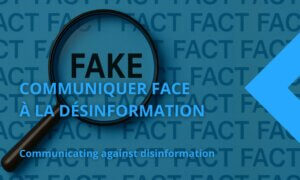Pourquoi les réseaux sociaux ?
Tout le monde s’entend à dire que les réseaux sociaux sont les nouveaux médias et que personne ne peut les éviter, pas même les entreprises. Ils sont la nouvelle vitrine de l’entreprise, et leur impact est parfois plus puissant que le site internet lui-même, qui reflète une image plus corporate et commerciale de l’entreprise. Les réseaux sociaux sont donc devenus le support de communication qui définit le mieux l’âme d’une entreprise. Effectivement, les opinions et les actualités partagées sur les réseaux sociaux donnent davantage d’humanité à l’entreprise. Toutes les actions concrètes de l’entreprise sont relayées sur ces plateformes et sont considérées comme des preuves de son activité. Une entreprise ne peut donc pas faire l’impasse d’une présence sur ces plateformes sociales. Mais quel réseau social choisir ? Quelles précautions prendre ? Et comment les prioriser ?
Les caractéristiques des réseaux sociaux et les bonnes pratiques pour les aborder correctement
Chaque réseau social fonctionne de manière unique et le public-cible diffère d’une plateforme à l’autre.
Quels sont les réseaux sociaux professionnels à privilégier quand on est une entreprise ?
Une entreprise utilise une ou plusieurs plateformes sociales. Cette utilisation est souvent limitée aux équipes de communication qui diffusent des messages corporate, c’est-à-dire des messages qui mettent en avant les actions de l’entreprise. Or, les followers ont tendance à suivre des individus et des personnalités qu’ils admirent, plutôt que des entités corporate qui peuvent manquer de personnalité. Quel que soit le réseau social abordé, il convient de sensibiliser les managers à la politique éditoriale de ces plateformes et à l’image que souhaite diffuser l’entreprise. De cette manière, ils peuvent devenir des ambassadeurs corporate actifs sur les réseaux sociaux. Qui plus est, les managers ont un réseau plus étendu que l’entreprise elle-même, alors pourquoi s’en priver ?
Quelles sont les caractéristiques des principaux réseaux sociaux ?
LinkedIn : Audience composée principalement de professionnels – Informations sérieuses – Fréquence de publication peut être limitée (pas d’obligation de publier toutes les semaines) et ne requiert pas de réactivité extrême. Facile de retirer des publications.
Facebook : Publications « people » et informations plus personnelles – vitrine sociale et humaine – Population vieillissante qui attire de moins en moins les jeunes.
Instagram : Population jeune et dynamique – réseau social qui privilégie le visuel, sous plusieurs formats comme la vidéo, la photo et les interviews courtes – Requiert des ressources graphiques importantes.
Twitter : Audience professionnelle – Média social dit « chaud » – Citations courtes et parfois polémiques sur l’actualité – La presse s’alimente beaucoup sur ce réseau – Nécessite une extrême ponctualité avec une récurrence de réactions à chaud et une qualité éditoriale ciblée.
YouTube : Média d’hébergement de vidéos professionnelles et amateurs – Importance des commentaires – Publicité très ciblée – Tutoriels – Présentation de produits – Storytelling – Conseils en ligne – L’image de l’entreprise est largement humanisée par du contenu authentique et réel.
Déterminer une politique et une ligne éditoriale claire pour publier sur les réseaux sociaux
Les réseaux sociaux sont des instruments de communication publics. Il est primordial de considérer tous leurs paramètres, avant d’engager l’image de son entreprise et celle de ses managers ambassadeurs corporate sur les réseaux sociaux. Il faut également garder en tête que tout le contenu publié sur ces plateformes devient public et peut créer de la viralité, souvent difficile à maîtriser.
C’est pour toutes ces raisons, que l’entreprise doit fixer une politique éditoriale très claire, de manière à encadrer les formes et thèmes de communication, et éviter les risques d’une viralité incontrôlée de certains. Certes, parmi tous les réseaux sociaux qui existent, certains sont plus contrôlables que d’autres. Néanmoins, il convient de définir une politique et une ligne éditoriale en adéquation avec la stratégie d’image souhaitée par l’entreprise.
Il est judicieux de se poser les « bonnes » questions avant toute publication : « Mon entreprise, trouve-t-elle un intérêt à aborder tel ou tel sujet, sur tel ou tel réseau social » ? « De quelle manière diffuser les positions de l’entreprise pour quel résultat d’image attendu » ? « Quelles audiences mon entreprise souhait-elle cibler » ? « Le manager ambassadeur corporate est-il formé et en ligne avec les objectifs d’image visés par l’entreprise » ?
Un lectorat par réseau social abordé
L’ensemble des plateformes sociales attire un lectorat qui diffère d’un réseau social à l’autre. Or, il est encore trop fréquent de lire des publications corporate uniformes et diffusées à l’identique sur les différents réseaux sociaux. En publiant du contenu sous le même format à travers tous les réseaux sociaux, l’entreprise considère alors que ses lecteurs auraient les mêmes centres d’intérêts et auraient le même profil. Il n’est pas optimal de systématiser ses publications corporate sur tous les réseaux sociaux, au détriment des différentes audiences qu’ils ont : les thèmes et les formes de publication doivent être adaptés.
Pour ces raisons, élaborer un calendrier de publications et définir une ligne éditoriale pour chaque plateforme sociale, sont des actions de communication qui participent à la réussite des performances d’une entreprise sur les réseaux sociaux.
- Déterminer la stratégie d’image poursuivie par l’entreprise
- Élaborer une liste de thèmes qui la porteront le mieux
- Définir les cibles d’audience privilégiées
- Estimer les risques de mauvaises interprétations et les anticiper
L’encadrement et l’accompagnement de Skills Communication
Oui, les réseaux sociaux sont les nouvelles vitrines des entreprises et sont devenus indispensables à la stratégie d’image de celles-ci. Le manager peut jouer un rôle primordial dans cette communication digitale, et devenir un ambassadeur corporate engagé. Il peut participer au bon développement de son entreprise sur les réseaux sociaux.
Pour réussir à optimiser sa stratégie d’image sur les réseaux sociaux, une entreprise peut s’entourer de professionnels de communication externes. Un DirCom détaché pourra guider les managers par exemple pour établir des sujets d’intervention propres à leurs métiers et leurs préférences, tout en restant en ligne avec la stratégie d’image de l’entreprise.
Skills Communication propose aux entreprises d’intégrer au cœur de leur projet, un DirCom détaché expérimenté, spécialiste international qui apportera ses compétences en médias, contenus éditoriaux, réseaux sociaux, etc.
A l’occasion d’une formation en groupe, en e-learning ou d’un encadrement individuel des managers, Skills Communication aide les équipes à contourner les obstacles habituels, comme le manque de temps, les doutes éventuels quant à l’utilisation des réseaux sociaux et leur capacité à écrire dans les formats requis.
Skills Communication peut mettre en place des outils et des ressources adaptés aux stratégies envisagées par les entreprises :
- Guider les managers dans le décryptage des réseaux sociaux
- Mettre en place une stratégie digitale pour optimiser l’image de l’entreprise, en choisissant les plateformes la mieux adaptée
- Promouvoir l’identité de marque de l’entreprise en adaptant le contenu à chaque réseau social (format/ton/thème/etc.)
- Maîtriser les outils de publication et les algorithmes des réseaux
- Gérer l’e-réputation, la communication de crise
- Comprendre les bonnes pratiques de gestion de communauté
- Construire une communauté autour des valeurs de l’entreprise
Articles relatifs:
- The influence of leaders on social networks
- ESG, when companies become committed investors.
- Community management: rules and best practices
- Your visibility on social media: how to grant influence and recognition?
- A real institutional communication strategy? Why and how?
- Brand Content, recipes for using this powerful image lever
- Internal Communication: a new era to keep human contact
- CSR Communication: Principles, Plan, and Effective Strategy
- Employer Branding: The Ultimate Weapon for Attracting Talent
- How can you strengthen your employer branding and ensure an attractive image for both future recruits and current employees?






